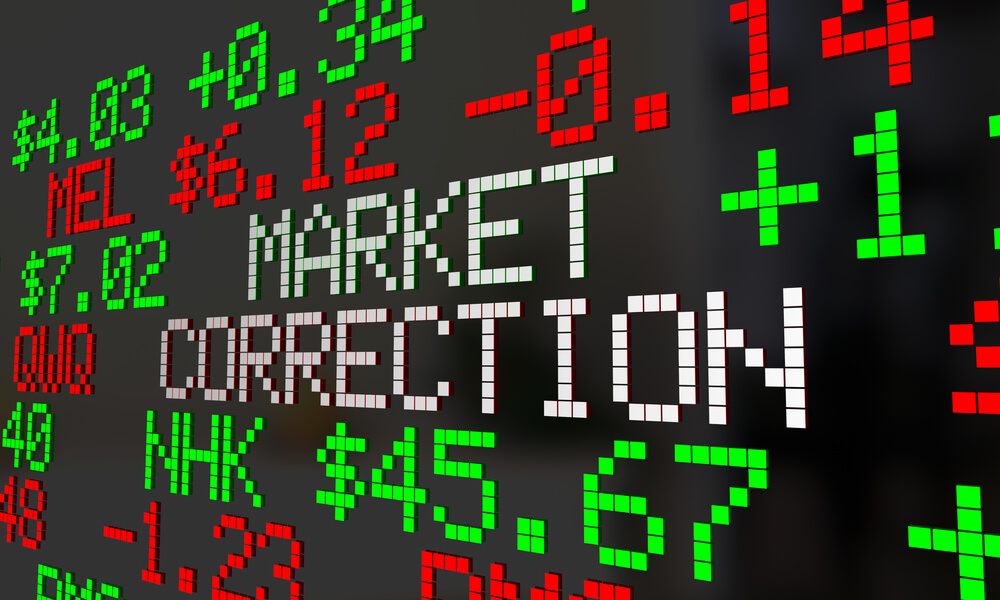Looking at the market, it feels a bit like Mike Tyson in his prime — just pummeling away on us right now.
It raises two questions:
- Is the market overvalued even after the recent S&P 500 correction?
- How do we make money with stocks selling off?
In this week’s Investing With Charles, Research Analyst Matt Clark and I answer both!
Check out the highlights from my conversation with Matt below.
Why This S&P 500 Correction Is Different
Charles: What’s different about today’s market sell-off?
What we have now is this potential that 30 to 40 years of globalization reverses.
If Russia responds to its sanctions by restricting its oil exports … or if we shut off their oil exports … it could lead countries to look for opportunities within their borders.
Countries may not want exposure to pariah states like Russia, so they try to keep things more local. They try to bring supply chains closer to home.
But nobody knows how this will change the overall market landscape going forward.
The market’s trying to handicap it; the technical term is “price discovery.”
The market’s trying to price in what this means, what the post-Ukraine world looks like… That’s what the market’s struggling with right now.
But that’s not even the worst part.
We’re going into this at a time when stocks are extraordinarily expensive.
I’ve been banging that drum here for a while, but even after its 12% decline, the S&P 500
You can see this in two standard valuation metrics:
- The price-to-sales ratio (P/S).
- And the cyclically adjusted price-to-earnings ratio (CAPE).
I like both of these because neither is too focused on today’s earnings, which can skew data in the short term.
Both of these metrics are far less sensitive to the current economic milieu.
So what does all this tell us?
Even after this decline, stocks are wildly expensive compared to any historical period, even the dot-com bubble.
But profitable opportunities are out there.
Editor’s note: President Biden announced a ban on Russian oil imports shortly after this recording.
After S&P 500 Correction, Are Stocks Still Expensive?
Matt: The S&P 500 is in quasi-correction territory after declining almost 12% from recent highs. But it’s not even close to a bear market.
But then let’s add in those metrics you talked about, starting with price-to-sales.
This chart looks back from 2001 to 2022. The S&P 500’s P/S was steady in the early 2000s before the 2008 crash.
After that, we saw a nice run up to that point in 2018, where we had the Fed deciding to be more aggressive. Then we saw a bit of a turndown before it ran higher to today’s levels.
Right now, we are at 2.85, but the P/S crested at 3 points last year. It was the highest it’s been in history.
Charles: And it’s still almost 50% more expensive than at the peak of the dot-com bubble.
CAPE Ratio: A Better Metric?
Matt: Let’s look at the CAPE Shiller price-to-earnings ratio. This metric is a lot less sensitive to one-off price movements. It’s a more consistent look at the value of the overall market.
Charles: CAPE is a 10-year average of earnings. It compares today’s prices to an average of the last 10 years of earnings. The 10-year timeframe matters because you’ll see a boom, a bust and everything in between when you look at almost any period of that length.
Matt: It’s a much more accurate look at the fundamentals of the stock market.
You can see the CAPE didn’t move that much in 2018 and 2019 when the Federal Reserve decided to be more aggressive.
It did sink during the COVID-19 crash of March 2020, but it quickly recovered.
Today, the CAPE is right around 35. It’s almost three times higher than the lowest point of the last 20 years. And that’s after an 11.6% downturn during the recent S&P 500 correction!
How to Trade in This Overvalued Market
Charles: If you just sit in cash and wait for the price-to-sales ratio, or the CAPE or whatever valuation metric to get to a certain level before you buy, you may be waiting for a long time. Never say never, but valuations may never hit 2008 levels in our lifetime.
But we don’t have to get to those levels to find attractive investments. The issue is we’re at the top end of the scale right now. I would like for us to at least be somewhere in the middle before I get too aggressive.
Matt: So this may be a good time to tweak your investing strategy.
You should still keep using limit orders and stop losses. None of that should change.
However, your broader strategy, if you like to buy and hold, now is a good time to switch it up a bit, yes?
Charles: I would say so.
If you had bought and held growth stocks starting in 2009, you’re sitting pretty.
But that’s not the market we’re in right now. It makes a lot more sense to be tactical.
The next five to 10 years will be a period where it pays to be more active. You’re going to want to engage in more short-term trading.
There aren’t a lot of historical examples, but look back to the last time we had inflationary pressures of this magnitude in the 1970s.
From 1968 to 1982, the Dow didn’t earn a cent. It was flat for 14 years. We saw similar dynamics from 2000 to 2013.
You can go through long stretches where you’re just not making money in a buy-and-hold strategy.
But that’s what trading is for. You can make great returns with a disciplined, short-term trading strategy.
Matt: Yeah. The key here is that it’s not a time for panic. It’s not a time for you to just go to your broker and sell everything.
Charles: And these changes don’t have to be extreme. You don’t have to just dump everything and go to cash or go to Mason jars in your backyard or whatever.
Carve out at a little chunk for short-term trading strategies. It can be something nimbler, something where your time horizon is days or weeks as opposed to months or years.
Because there’s still money to be made in this market.
Look at energy. Energy and commodities are killing it. They‘re having a phenomenal year.
Investors that dedicated a chunk of their core growth stock portfolio to current energy and commodities plays are sitting pretty right now.
If you’re looking for a place to start with short-term trading, you should check out my colleague Adam O’Dell’s premium stock research service Home Run Profits.
Adam’s subscribers just locked in a 500% gain on the final third of their position in an oil giant — after only three months! They sold the first two thirds of the position for 60% and 100% profits, too!
Since 2022 started, 14 of 17 closed plays (some being partial positions of the same trade) in Home Run Profits were for positive gains — all while the broader market sold off.
Click here to see how Adam does it.
Where to Find Us
Coming up this week, Matt will have more on The Bull & The Bear podcast, so stay tuned.  Don’t forget to check out our Ask Adam Anything video series, where Chief Investment Strategist Adam O’Dell answers your questions.
Don’t forget to check out our Ask Adam Anything video series, where Chief Investment Strategist Adam O’Dell answers your questions.
You can also catch Matt every week on his Marijuana Market Update. If you are into cannabis investing, you don’t want to miss Matt’s weekly insights.
Remember, you can email my team and me at Feedback@MoneyandMarkets.com — or leave a comment on YouTube. We love to hear from you! We may even feature your question or comment in a future edition of Investing With Charles.
To safe profits,
Charles Sizemore, Co-Editor, Green Zone Fortunes
Charles Sizemore is the co-editor of Green Zone Fortunes and specializes in income and retirement topics. He is also a frequent guest on CNBC, Bloomberg and Fox Business.






